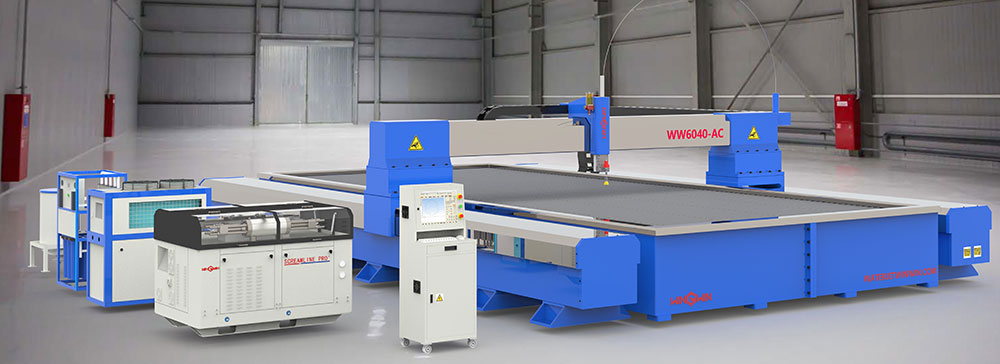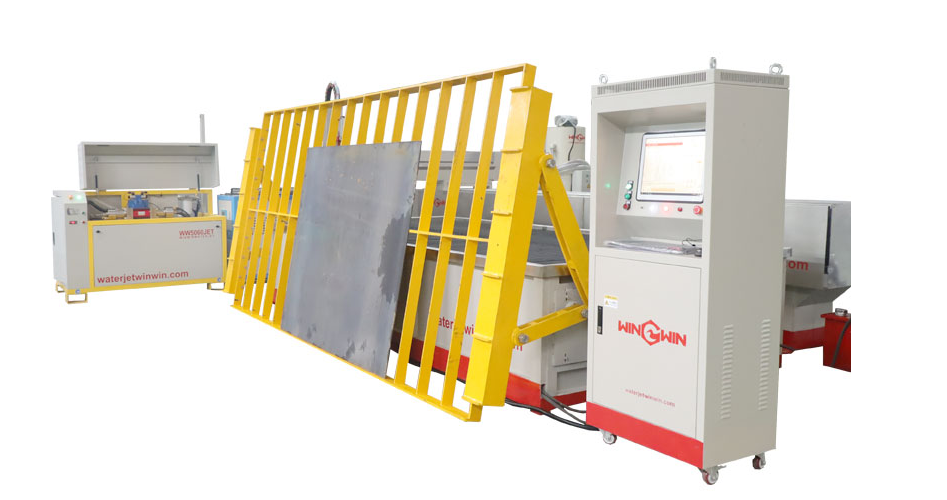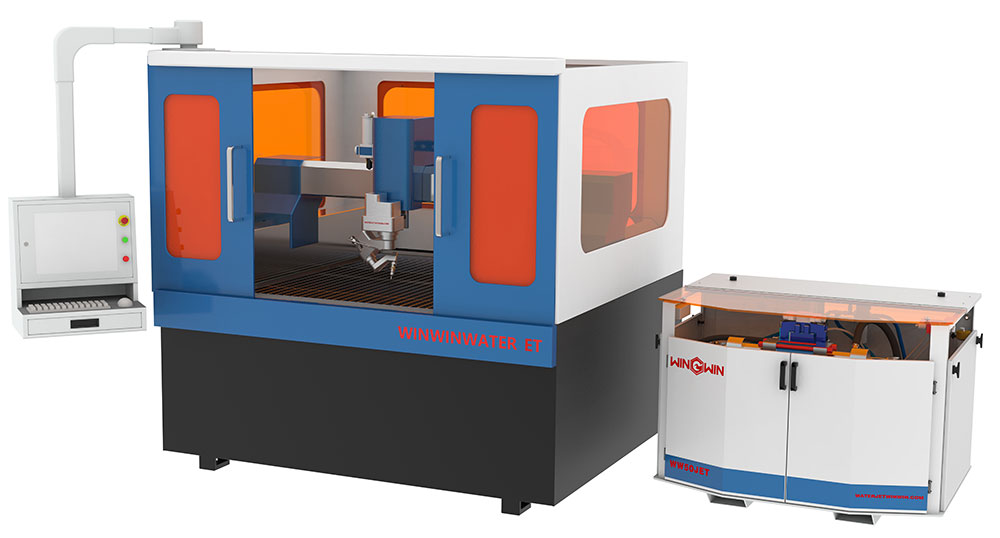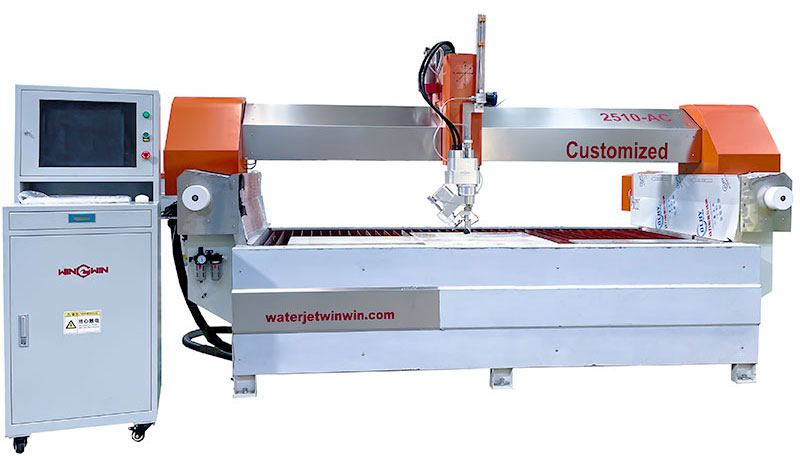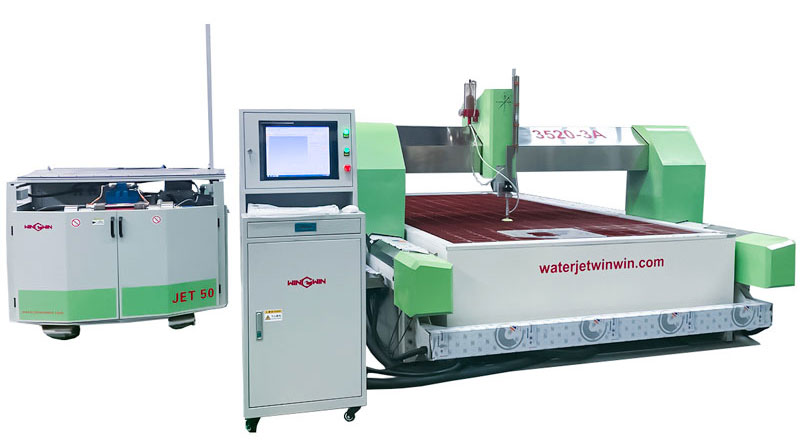What kind of materials can win-win waterjet cut ?
Win-Win Metal Cutting waterjet Systems
Waterjet tables can be used to cut thicker metals than can be processed with a laser – like titanium and aluminum
(up to 12”/305mm)– and offer greater precision than plasma cutting. Abrasive waterjet systems are also less expensive
than laser solutions, making them a solid choice for metal and steel cutting in the fabrication industry.
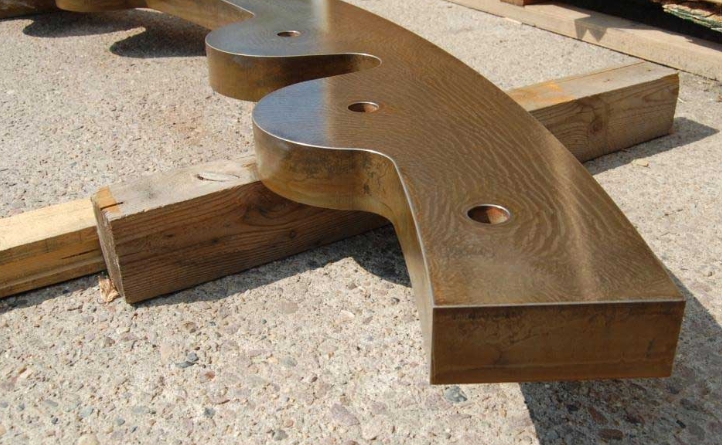 | 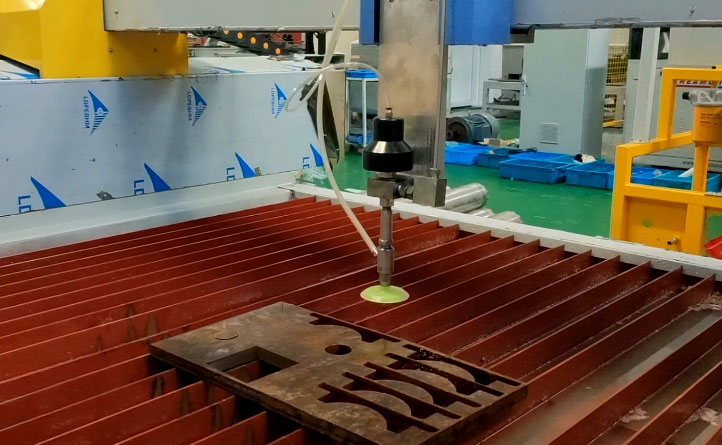 |
Waterjet Cutting for Stone & Tile
Waterjet machines using the Win-Win Waterjet pumps are perfect for creating corporate logos in decorative
designs on walls or inlaid into floors, countertop parts, faucet and sinkholes as well as a smoother radius off
sharp edges of slabs cut with saws.
Ideal for Job Shop owners, stone cutting, marble cutting, granite cutting and Tile can all be fabricated by
designers, for nontraditional “zero gap” cutting circular, square, oval, tile rugs, stone rugs, borders, murals,
entry ways, kitchens, bathrooms, octagon patterns, medallion designs, border and accent tiles, polished,
unpolished and textured porcelain.
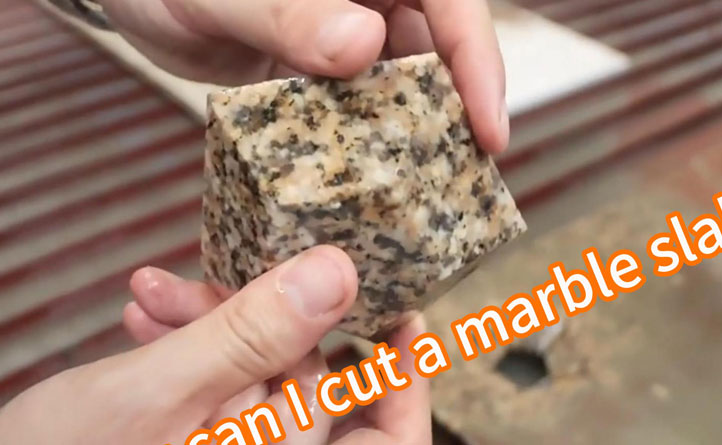 | 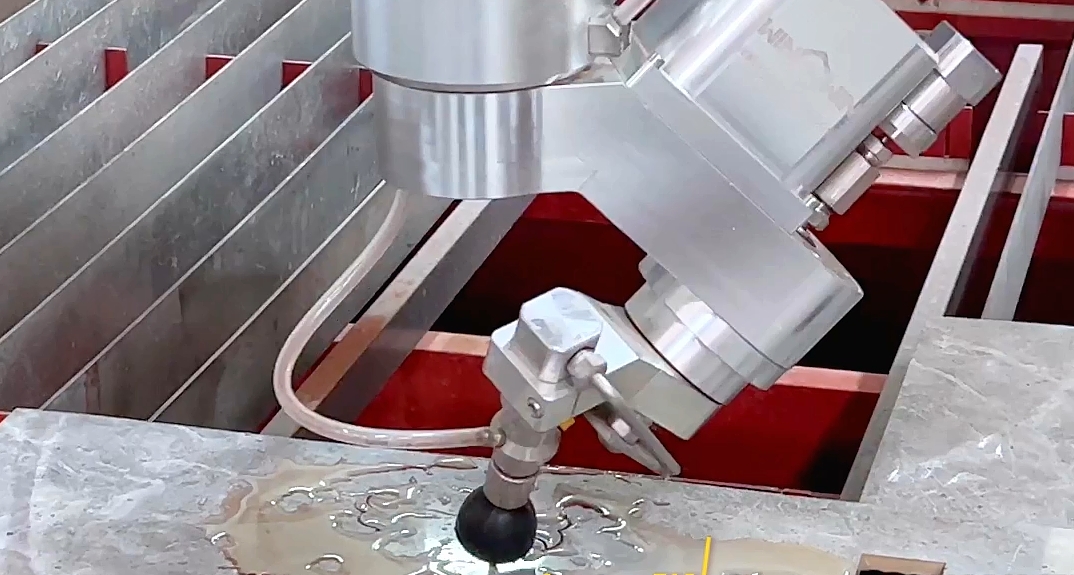 |
Waterjet Cutting Food
water jets have been used as a manufacturing process to cut variety types of food cutting,
including pizza, cakes, romaine lettuce, celery, meats, frozen fish, bacon, sandwiches, pettit fours,
candy bars, granola bars and all types of frozen food. Pure water cutting up to 90,000 PSI/6,200 bar
offers the greatest added value by cutting produce, meats, bakery, and confection products in a
sanitary environment without the cross contamination found in blade cutting systems.
Meet Our Food Cutting OEMs
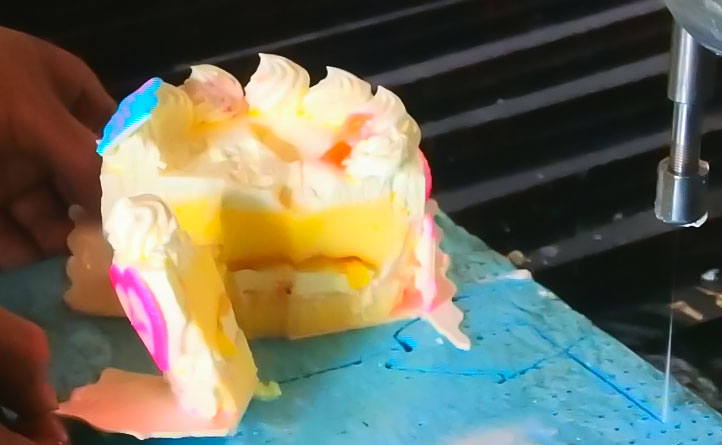 | 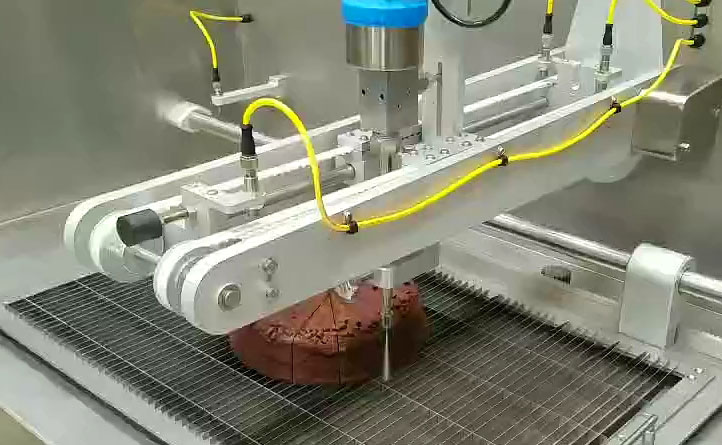 |
Win-Win Waterjet cutting Composite
Because composites are not homogenous materials and are reinforced for greater strength, cutting
composites requires a different approach than ceramic cutting or metal cutting, for example. Using
conventional cutters and machining techniques will quickly cause parts to wear out and require
replacement. Employing the techniques often used for cutting granite or titanium may also compromise
the strength of the composite and/or cause delamination, making the material less suitable for use in
applications such as aircrafts and medical devices.
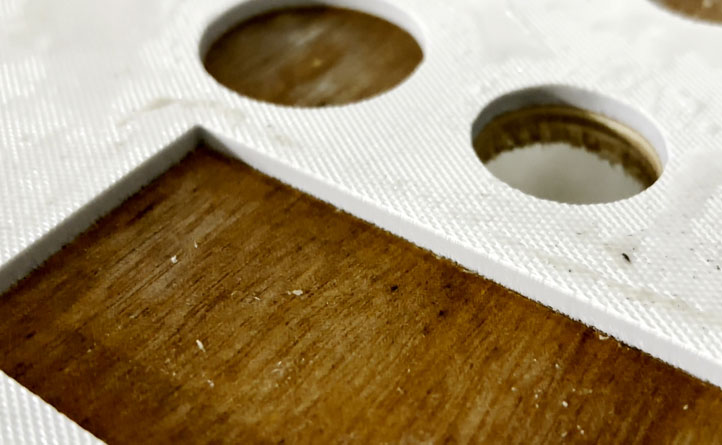 | 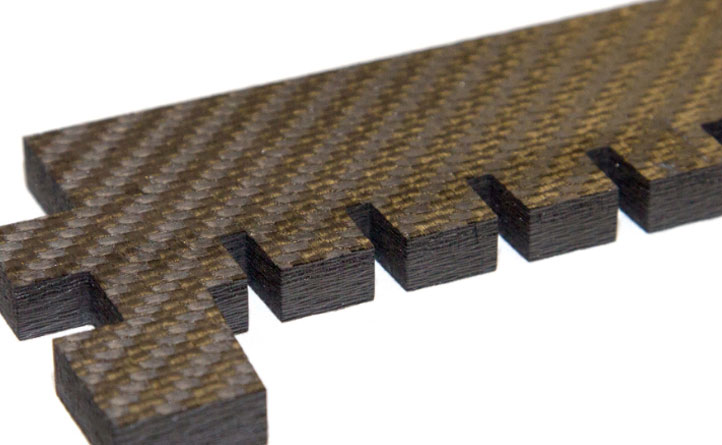 |
Win-Win waterjet Cutting Glass
Abrasive waterjet cutting technology is a great method for cutting glass because it allows for contours
and shapes that cannot be achieved with other cutting machines at a reasonable cost. From artistic
tabletop inlays to detailed stained glass designs, mirrors, glass ornaments, replacement windows for
antique cars, and more, there’s almost no glass cutting application* that a waterjet cutting machine
from win-win Waterjet can’t tackle. *(Not suitable for the processing of tempered or hot glass)
Glass has a tendency to crack, so it is very important that the initial holes are produced with a reduced
pressure of 7,200 PSI/500 bar to 11,600 PSI/800 bar. Subsequently, the pressure must be increased to a
cutting speed that is cost-effective. For glass, ceramics and other brittle materials, you must gradually
increase and reduce the cutting pressure by means of proportional pressure control of the intensifier
pump, otherwise the material would be destroyed.
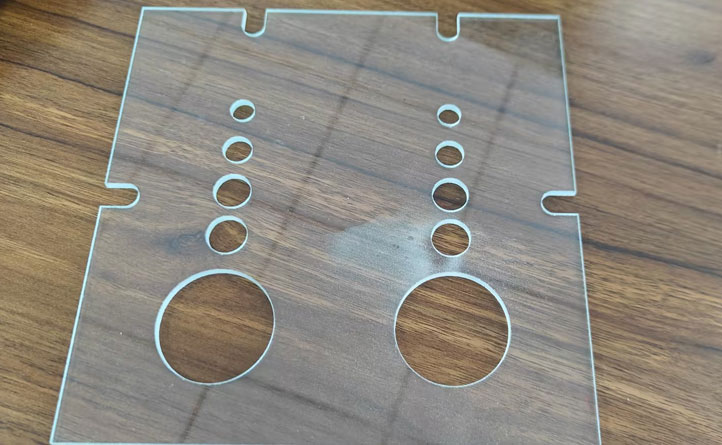 | 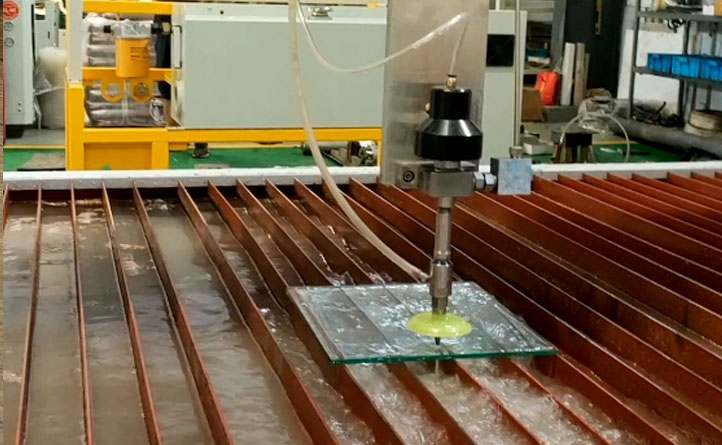 |
Plastic and Acrylic Cutting with Waterjet
Water jet cutting technology has been used for several decades to perform plastic and acrylic cutting.
In fact, this process supersedes the development of the abrasive waterjet used to cut harder materials
such as stone, glass, and metals. Unlike abrasive waterjet cutting, however, only pure waterjet is used
to cut plastics and acrylics.
The clean, very thin waterjet stream (thinner than a strand of human hair) does not cause the material
being cut to absorb water, maintaining the integrity of the materials. The technology also does not create
heat-affected zones while precisely cutting with speed. Waterjet leaves a smooth, clean cut, virtually
eliminating and second operation for finishing. Thus, the efficiency of the process makes cutting with
water jets an effective solution for manufacturers of plastic and acrylic components and parts.
Paper Cutting & Slitting with Waterjet
Water jet cutting technology has been used for several decades to perform paper cutting. In fact, this
process supersedes the development of the abrasive waterjet used to cut harder materials such as stone,
glass, and metals. Unlike abrasive waterjet cutting, however, only pure waterjet is used to cut paper and foods.
The clean, very thin waterjet stream (thinner than a strand of human hair) does not cause the material being
cut to absorb water, maintaining the integrity of the paper. The technology also does not create heat-affected
zones while precisely cutting with speed. Thus, the efficiency of the process makes cutting with water jets an
effective solution for paper manufacturers.
Waterjet cutting with pure water is the ideal solution for the cutting and slitting of paper and plastic webs
as well as cardboard panels. The technology is already widely used in the production of wallpaper and
packaging material.
The most common machine used in this field is called a slitter, which is a longitudinal cutting machine
equipped with one or more pure water cutting heads. The material to be cut is transferred on a conveyor
and is cut by the cutting heads located above the belt. In contrast to cutting with roller blades, the material
is not shifted and there is no dust produced in the process. As the material is in contact with the waterjet
for only a split second, its quality is not affected. The method is also suitable for the cutting of several layers
of material. In this case, the operator must ensure that there are no cavities between the layers where water
could collect.
HVAC Insulation Cutting with Win-Win Waterjet
Win-Win Waterjet cutting will help to eliminate the duct liner bottleneck in your shop while reducing the labor
associated with this process. Using conventional cutters and machining techniques will quickly cause parts to
wear out and require replacement. Employing the techniques often used for cutting HVAC duct work liners may
also compromise the strength of the insulation and/or cause delamination, making the material less suitable.
As an alternative, cutting with a water jet offers a number of benefits for HVAC rollforming machining. Win-Win
water jet intensifier pumps do not produce heat-affected zones (HAZ) or leave rough edges/burrs that require the
material to undergo secondary finishing with other cutting applications. Additionally, very little waste is created
with water jet technology to protect the material investment, and the speed of the technology makes it well suited
to high production requirements.
 wwaterjet
wwaterjet 